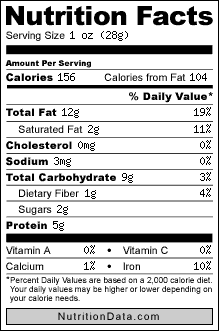| Cashew | ||||||||||||||
|---|---|---|---|---|---|---|---|---|---|---|---|---|---|---|
 Cashew fruit | ||||||||||||||
| Scientific classification | ||||||||||||||
| ||||||||||||||
| Binomial name | ||||||||||||||
| Anacardium occidentale L. |
The Cashew Anacardium occidentale is a tree in the flowering plant family, Anacardiaceae. The plant is native to northeastern Brazil, where it is called by its Portuguese name Cajś (the fruit) or Cajueiro (the tree). It is now widely grown in tropical climates for its cashew "nuts" and cashew apples. Originally spread from Brazil by the Portuguese, the cashew tree today can be found in all regions with a sufficiently warm and humid climate.
What appears on the tree to be the "fruit" of the cashew tree is an oval to pear-shaped pseudofruit or false fruit that develops from the receptacle of the cashew flower. Called the cashew apple, it ripens into a yellow and/or red structure about the size of a plum or pear (5-11 cm).
The true fruit of the cashew tree is a roughly kidney-shaped or boxing-glove shaped drupe that grows at the end of the pseudofruit. Actually, the drupe develops first on the tree, then the peduncle expands into the pseudofruit. Within the true fruit is a single seed, the cashew nut (technically a seed, not a nut, although the true fruit is classified as a nut by some botanists). The seed is surrounded by a double shell containing a caustic phenolic resin. Some people are allergic to cashews but cashews are a less frequent allergen than some other nuts.
Uses
The cashew apple is used for its juicy but acidic pulp, which can be eaten raw or used in the production of jam, chutney, or various beverages. Depending on local customs, its juice is also processed and distilled into liquor or consumed diluted and sugared as a refreshing drink. In Goa, India, the cashew apple is the source of juicy pulp used to prepare fenny, a locally popular distilled liquor. The cashew apple contains much tannin and is very perishable. For this reason, in many parts of the world, the false fruit is just dumped after removal of the cashew nut.
Cashew fruit contain a potent skin irritant toxin called urushiol within the dark green nut shells. This must be removed when the seed inside is processed for consumption; this is done by shelling the nuts, a somewhat hazardous process, and exceedingly painful skin burns (similar to poison ivy burns) among processing workers are frequent. The so-called 'raw cashews' available in health food shops have been cooked but not roasted or browned.
Cashew seeds are a common ingredient in Asian cooking, for example in dishes such as "chicken with cashews". They can also be ground into a spread similar to peanut butter. Cashews have a very high oil content, and they are used in some other nut butters to add extra oil. In an off-the-shelf package of cashews found in the United States, a 30 gram serving contained 180 calories, 70% of which was fat.

The liquid contained within the shell casing of the cashew, known as Cashew Nutshell Liquid (CNSL) has a variety of industrial uses which were first developed in the 1930s. CNSL is fractionated in a process similar to the distillation of petroleum, and has two primary end products; solids that are pulverized and used as friction particle for brake linings, and an amber colored liquid that is aminated to create phenalkamine curing agents and resin modifiers. Phenalkamines are primarily used in epoxy coatings for the marine and flooring markets, as they have intense hydrophobic properties and are capable of remaining chemically active at low temperatures.
References and external links
- Morton, Julia F. Fruits of Warm Climates. ISBN 0-9610184-1-0
- Fruits of Warm Climates online (http://www.hort.purdue.edu/newcrop/morton/index.html)
- Handbook of Energy Crops - Anacardium occidentale L. (http://www.hort.purdue.edu/newcrop/duke_energy/Anacardium_occidentale.html)
- Cajueiro - Tropical plant database by Raintree Nutrition (http://www.rain-tree.com/cajueiro.htm)
- History of the industrial use of Cashew Nutshell Liquid (http://www.cardolite.com/www/cnsl_history.htm)
- Section
Eclectic herbal information
- King's American Dispensatory: Anacardium occidentale (Cashew-Nut) (http://www.ibiblio.org/herbmed/eclectic/kings/anacardium.html)
- A Modern Herbal: Cashew Nut (Anacardium occidentale) (http://www.botanical.com/botanical/mgmh/c/casnut29.html)
- Section
Homeopathic information
- Kent's Lectures on Homeopathic Materia Medica: Anacardium orientale (anac.) (http://www.homeoint.org/books3/kentmm/anac.htm)
- A Primer of Materia Medica for practitioners of Homopathy: Anacardium (http://www.homeoint.org/books5/allenprimer/anac.htm)

